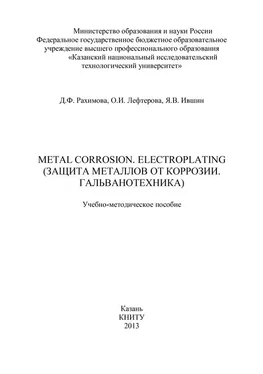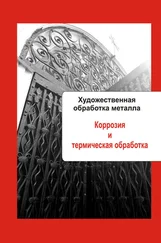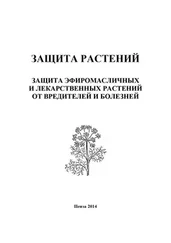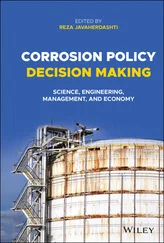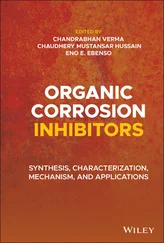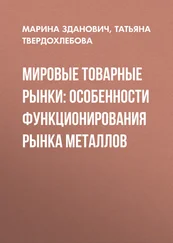3. Marine environments are characterized by the presence of copper and sulphur.
4. Atmospheric environments can be classified as: urban, marine and rural.
6 . Work in pairs. Translate the following sentences from English into Russian.
The term “atmospheric corrosion” comprises the attack on metal exposed to the air as opposed to metal immersed in a liquid. Atmospheric corrosion is the most prevalent type of corrosion for common metals.
Atmospheric corrosion is a subject of global concern because of its importance to the service life of equipment and durability of the structural materials. While there is a general agreement on the possible types of parameters that may lead to corrosion, these studies suffer severely from the lack of generality in the sense that their predictive capability is extremely poor. Conventional atmospheric parameters that may lead to metal corrosion comprise of weathering factors such as temperature, moisture, rainfall, solar radiation, wind velocity, etc. Air pollutants such as sulphur dioxide, hydrogen sulphide, oxides of nitrogen, chlorides have also been found to contribute to atmospheric corrosion. The complexity and diverse nature of the atmospheric pollutants make the prediction of the atmospheric corrosion difficult. The synergistic interaction of the variables must also be considered in the model for arriving at a definite solution. A direct approach to the problem is to measure the observed corrosion rates and the participating atmospheric parameters and correlate them. The correlation equations, thus derived, are known as damage functions and they have been found to be extremely useful, though in a restricted manner, as the results are not easily transferable from one place to another.
7 . Read the text. What is its main idea?
Особенностью атмосферной коррозии является возможность свободного подхода кислорода к корродирующей поверхности. Это обусловлено малой толщиной пленки и за счет конвекции перемешивания электролита. Именно поэтому даже в подкисленных электролитах атмосферная коррозия протекает с кислородной деполяризацией.
Также из-за тонкого слоя влаги на поверхности корродирующего металла анодный процесс идет с затруднением, а протекание катодного, наоборот, облегчается.
При работе гальванопар (galvanic couple) небольшая толщина пленки влаги тоже играет свою роль – увеличивается омическое сопротивление электролита.
Атмосферная коррозия сплавов, в основу которых входит железо (например, сталь), протекает с анодно-катодно-омическим контролем. Но в зависимости от некоторых условий (толщина, электропроводность пленки влаги, ее состав, природа металла) анодно-катодно-омический контроль может переходить в преимущественно анодный, преимущественно катодный или омический. (From www.okorrozii.com) .
8 . Work in pairs. Interpret the following passage sentence by sentence.
The most common characteristic of metallic atmospheric corrosion is the localized character of its nucleation. Preferential nucleation sites depend on the metal structure and are associated to the presence of different phases or environmental pollutants on discrete areas of the metallic surface. In the case of carbon steel, nucleation starts with the formation of small protuberances of corrosion products at isolated points on the metallic surface, followed by the formation of a large number of corrosion product nuclei that can cover the entire surface after relatively short exposure times.
9 . Give English equivalents to the following word combinations and learn them by heart:
скорость коррозии
коррозийный процесс
сырость внешних конструкций
коррозия в металлах
химическая активность углеродной стали
атмосферная коррозия меди
агрессивные среды
анодный процесс
прогнозируемость атмосферной коррозии
10 . Give Russian equivalents to the following word combinations and learn them by heart:
galvanic couple
ohmic control
cathodic process
electric conductivity
atmospheric pollution
fossil fuels
combustion products
metal surface
oxide film
11 . Translate the following sentences into Russian.
1. Predictability of atmospheric corrosion, in principle, should be based upon the complete understanding of the corrosion process and interdependence of the contributing parameters.
2. Grossman has investigated the atmospheric factors which determined the time of wetness of the outdoor structures.
3. In polluted atmospheres, chlorides and SO 2are the common pollutants influencing metallic corrosion.
4. Among the factors affecting the type and amount of atmospheric corrosion products, the main role is played by the reactivity of carbon steel.
5. The general sequence of atmospheric corrosion of copper is well known.
6. Atmospheric corrosion can be classified into dry, damp and wet categories.
7. Principal corrosives consist of moisture, relatively small amounts of sulfur oxides, and carbon dioxide from various combustion products.
8. The most potent causes of corrosion in industrial environments are the sulfur oxides and nitrogen oxides produced by the burning of automotive fuels and fossil fuels in power stations.
9. The critical relative humidity, above which metals corrode, drops to about 60 percent when these airborne pollutants are deposited on the metal surface.
10. A fundamental requirement for electrochemical corrosion processes is the presence of an electrolyte.
12 . Translate the following sentences into English.
1. Скорость коррозии и вид коррозионного разрушения зависят от природы металла, влажности, загрязненности атмосферы.
2. Загрязнение атмосферы газами, пылью резко ускоряет коррозию.
3. При образовании фазовых пленок в области мокрой коррозии затруднятся доставка кислорода и наблюдается катодное торможение процесса.
4. Стойкость металлов к атмосферной коррозии зависит от их химической природы и состояния поверхности.
5. Наличие узких щелей и зазоров, в которых возможны капиллярная конденсация и застой влаги, усугубляют атмосферную коррозию и могут привести к образованию коррозионных язв.
Читать дальше
Конец ознакомительного отрывка
Купить книгу
